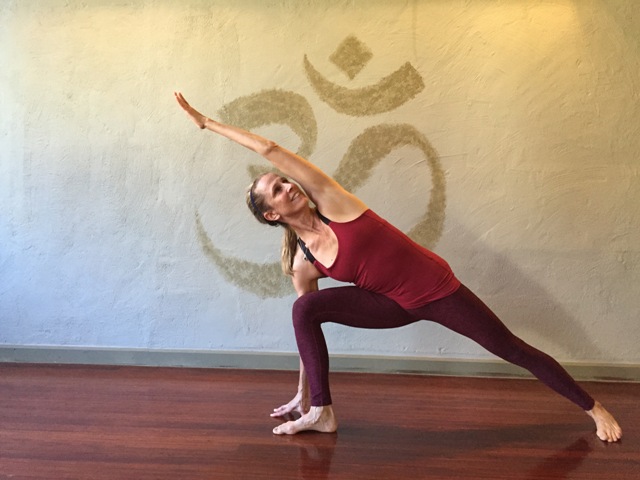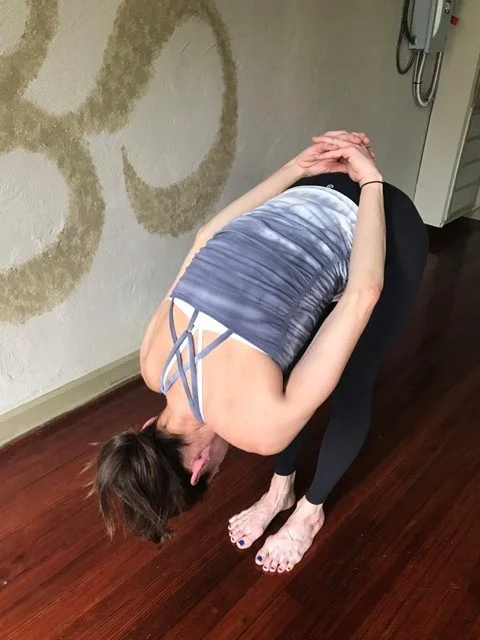This incident happened in May of 2017. I’m not sure why it is making the rounds now, but it is a good cautionary tale. Any activity, including yoga, can be dangerous. Some of it depends on your health history. You know that saying about consulting your doctor before you embark on any exercise regime, right?! How many of us do that? Some of the conditions that predispose you to stroke are obesity, high blood pressure, high cholesterol and diabetes. If you have any of these conditions, check with your doctor to see what you should or should not be doing, not your yoga teacher.(Although, please let me know if you have any of these conditions.) Once your doctor has cleared you to do things, or suggested you don’t do certain things, that’s where your yoga teacher comes in. I can help you build towards a pose over time if appropriate, or find a suitable modification for a pose that you shouldn’t do.
While she survived the ordeal, Ms. Leigh still suffers the consequences of what she did. She has trouble speaking and suffers headaches. She cautions people not to push themselves in yoga, to take their time, go easy, be patient. This is always the advice in yoga, but our ego can get in the way and sometimes we want to go just a little bit further to try a little bit harder. We often want our results now. It is important to work on maintaining good alignment from the beginning in any pose. Start with the foundation and work gradually and intelligently from there. Often students think that they are more advanced than they are and just want to achieve the pose. This story is a dramatic reminder to be patient and work within your abilities and limitations.
In the book How Yoga Works, Miss Friday asks her student The Captain to try to touch his toes while standing up. He bends forward and his fingers are about a foot off the ground. She grabs some stacks of paper off of his desk and puts them on the floor under his hands until his fingertips reach the top of the stack. Then she tells him to practice this pose every day, but that he can only remove one sheet of paper a day. The Captain gets dejected when he looks at the 1,000 or so sheets of paper that are stacked up under his fingers. He reckons that it will take more than three years to touch the floor. But really, what’s the hurry? There are no prizes for achieving a pose and there certainly are consequences for pushing ourselves too far.
One of the things I thought was interesting, and scary, is that despite having trouble with vision and the use of her left arm, it took this woman 2 days to get to the hospital to be looked at. This story is a good reminder that it is better to be checked out right away than it is to sleep on it and see how you feel in the morning. Fast treatment can lessen the brain damage that stroke can cause.
Here are the warning signs for stroke. The CDC uses the acronym F.A.S.T. to help you remember:
Acting F.A.S.T. Is Key for Stroke
When someone is having a stroke, every minute counts. Just as putting out a fire quickly can stop it from spreading, treating a stroke quickly can reduce damage to the brain. If you learn how to recognize the telltale signs of a stroke, you can act quickly and save a life—maybe even your own.
Acting F.A.S.T. can help stroke patients get the treatments they desperately need. The stroke treatments that work best are available only if the stroke is recognized and diagnosed within 3 hours of the first symptoms. Stroke patients may not be eligible for these if they don’t arrive at the hospital in time.
If you think someone may be having a stroke, act F.A.S.T. and do the following simple test:
F—Face: Ask the person to smile. Does one side of the face droop?
A—Arms: Ask the person to raise both arms. Does one arm drift downward?
S—Speech: Ask the person to repeat a simple phrase. Is the speech slurred or strange?
T—Time: If you see any of these signs, call 9-1-1 right away.
If you want to read more about strokes, here is the link to the CDC pages.
















